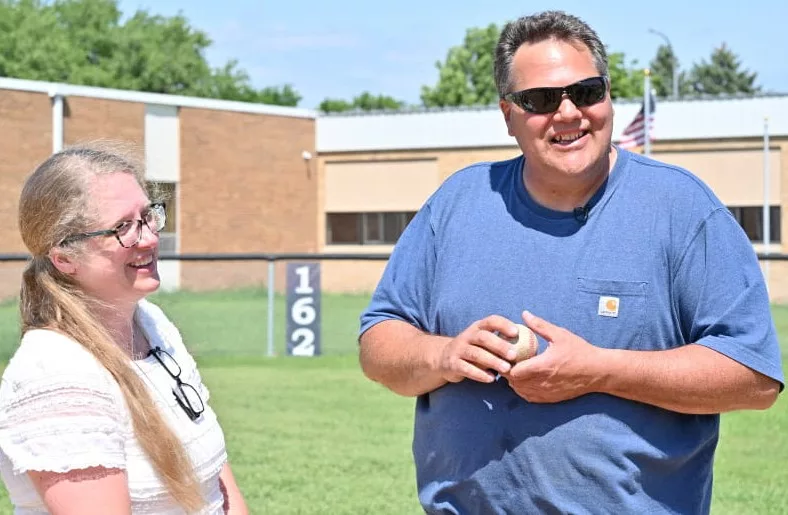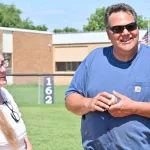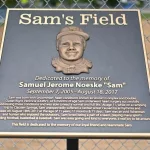
VALLEY CITY, N. D. (AHA) – The following is a story from the American Heart Association (AHA)
In 2017, Jerry and Amy Noeske’s 11-year-old son, Sam, had a cardiac arrest while camping with family friends. They were about 20 miles from the nearest hospital in Valley City, a town with a population of roughly 6,500.
His mother, Amy, says that if Sam had been near an automated external defibrillator, “that might have changed the course for him.”
Although Sam had been born with a congenital heart defect that required open-heart surgery, “he just was like a normal kid. There weren’t any signs that he would go into an arrhythmia,” Amy said, noting he was big for his age and able to participate in sports. Baseball was his favorite.
Frantic to save Sam’s life, his friend’s father performed CPR until he collapsed from exhaustion. His 13-year-old daughter continued chest compressions until local first responders arrived. Not equipped with a rescue device known as an automated external defibrillator, they kept Sam alive with CPR until the sheriff showed up and used the AED in his vehicle to restore a normal heart rhythm.
By the time Valley City paramedics arrived, nearly 20 minutes after Sam’s cardiac arrest, his heart had gone back into arrhythmia. While they were able to reestablish a normal heart rhythm using an AED, too much time had passed. After five days in a coma, with his parents by his side, Sam died.
When he first collapsed, “he just wasn’t near an AED, and that might have changed the course for him,” Amy said.
“It changes you. It changes your whole family.”
Baseball was 11-year-old Sam Noeske’s favorite sport. After his death, a baseball field was established at a Valley City, North Dakota, elementary school in his memory.
Sam’s parents are quick to credit the American Heart Association. They are helping to educate rural communities about the importance of knowing CPR, providing grants to put AEDs in public buildings such as churches and libraries, and encouraging people to “know their numbers.”
The first responder unit that initially arrived on the scene for Sam is now equipped with an AED.
“A lot of people said they were going to take CPR classes after Sam died,” Amy said. “The American Heart Association is an important voice for heart health and community readiness for cardiac emergencies.”
The AHA’s Mission: Lifeline® program has been invaluable in those efforts, said Alana McClellan, a close friend of the family and a nurse for more than 30 years. Mission: Lifeline works to build a nationwide network of interactive systems of cardiovascular care.
“The AHA has been instrumental in getting grants and programs running so that we can improve our stroke and heart attack care,” said McClellan, director of nursing at the local hospital, CHI Mercy Health Valley City. She also heads the Cardiac Ready Community advisory committee. In 2022, the hospital was recognized by the state as its first Acute Cardiac Ready Hospital.
In addition, nearly 93% of health care professionals surveyed felt strongly that they have a better understanding of the key issues related to working with stroke patients. And nearly 70% strongly agreed that communication between hospital staff and emergency medical services has improved.
“We review each case to see if something went wrong, so we can improve and make our processes better,” McClellan said.
That’s especially important in rural areas, where people are at a significantly higher risk of dying from stroke than in urban areas.
Jerry and Amy Noeske are ever grateful for the expertise of local emergency personnel.
“If they hadn’t known CPR, we wouldn’t have been able to say goodbye,” Amy said.
To honor Sam, administrators at Washington elementary school established Sam’s Field, a baseball diamond, complete with an old-time scoreboard and dugouts. People in the tight-knit community donated the materials and their labor.
While Jerry acknowledged that the grief never goes away, “It’s not a sad place,” he said. “It brings a smile when we get here.”
(Photos by Walter Johnson Jr./American Heart Association)



